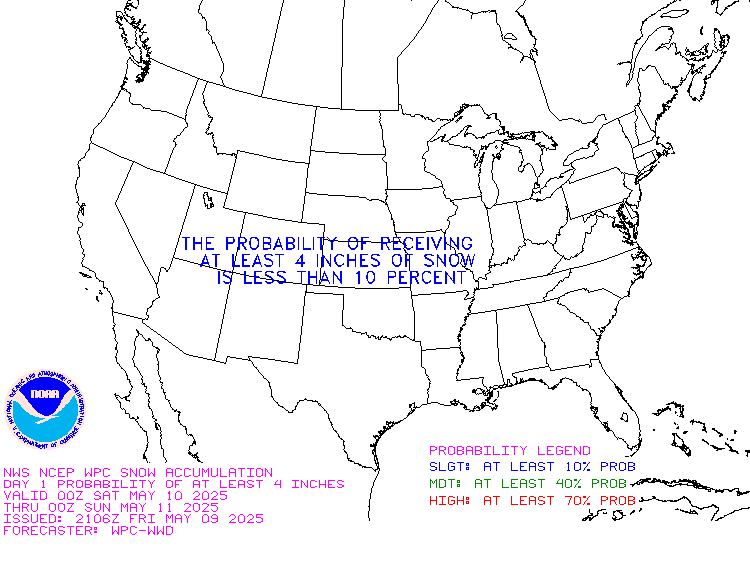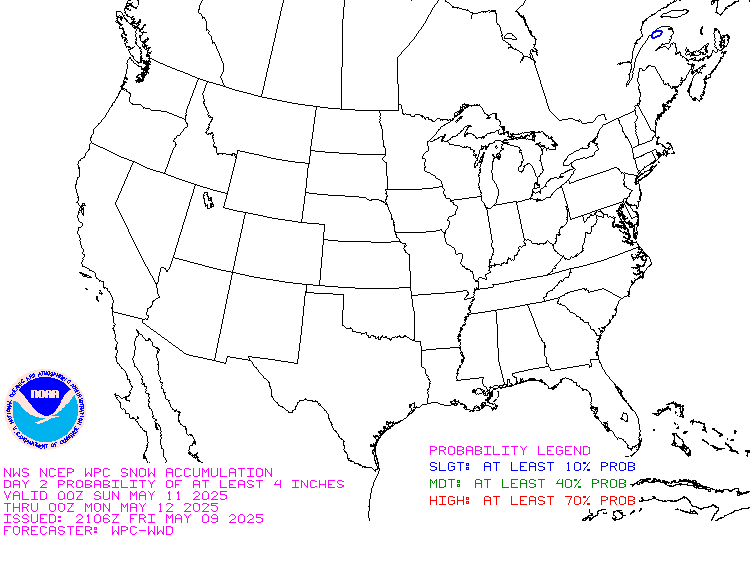It is difficult to find a more comprehensive Weather Outlook anywhere else with the ability to get a local 10-day Forecast also.
This article focuses on what we are paying attention to in the next 48 to 72 hours. The article also includes weather maps for longer-term U.S. outlooks and a six-day World weather outlook which can be very useful for travelers.
First the highlights from the NWS.
Short Range Forecast Discussion
NWS Weather Prediction Center College Park MD
Thu Feb 15 2024
Valid 12Z Thu Feb 15 2024 – 12Z Sat Feb 17 2024…A Pacific storm system pushing into the West Coast will bring locally
heavy rain near the coast, and heavy high elevation snowfall into the
Intermountain West over the next couple of days……Quick-hitting storm system to produce accumulating snowfall across the
Great Lakes today and into the Interior Northeast Thursday night and
Friday morning……Next round of snow expected to quickly spread from the central Plains
and Ohio Valley on Friday, then into the Central Appalachians and
Mid-Atlantic Friday night into Saturday morning…
To get your local forecast plus active alerts and warnings click HERE and enter your city, state or zip code.
Above is a 72 hour animation of the forecast.
Then, looking at the world and of course, the U.S. shows here also. Today we are looking at precipitation.
Please click on “Read More” below to access the full report issued today.
| Notices: What would you like to learn about? Please provide that to me via the comment section at the end of the article. |
Now more detail on the 48-Hour Forecast (It is a 48 to 72 Hour Forecast actually)
Daily weather maps. The Day 1 map updates twice a day and the Day 2 and 3 maps update only once a day. These maps update automatically. But if that does not happen, you can get updates by clicking HERE
TODAY (or late in the day the evening/overnight map will appear) (Key to surface fronts shown on maps and you will then also be able to insert a city name or zip code and get a local NWS forecast).
TOMORROW
NEXT DAY
This animation shows how things may play out over the next 60 hours. To update click here.
The NWS Climate Prediction Center’s: Watches, Warnings, and Advisories plus other information can be found HERE. We post at least one of those updates daily, sometimes both. The Highlights are shown in the lede paragraph of this article.
ATMOSPHERIC RIVERS
This tells us what is approaching the West Coast. Click HERE to update If I have not gotten around to doing the update. Here is some useful information about Atmospheric Rivers.
Continuation of the NWS Short Range Forecast. It is updated by NWS twice a day and these updates can be found here
A Pacific storm system is ushering in a stream of precipitation into the
West Coast and Intermountain West the next couple days. Meanwhile, a
sufficiently cold air-mass anchored in place by high pressure over
southwest Canada will force a frontal boundary to remain stationary over
the central and northern Rockies through Friday. Coastal areas of the
Pacific Northwest and the valleys of the Intermountain West can expect
periods of rain, while mountain ranges such as the Oregon Cascades, the
Olympics in western Washington, and on east into the heart of the Northern
Rockies witness heavy snow today. By Friday, precipitation will take a
break across the Pacific Northwest, but the cold front will push south
into the central Rockies where periods of heavy snow from the Tetons and
Wind River Range of Wyoming on south to the Wasatch and northern Colorado
Rockies also receive heavy snow. Through Friday night, as much as 1-2 feet
of snow is possible in the Oregon Cascades, the Boise and Sawtooth
mountains of Idaho, and along the northern Wasatch, the Tetons, and
northern Colorado Rockies. Winter Storm Warnings and Advisories have been
hoisted for many of these mountain ranges today and into Friday with
hazardous travel conditions likely in most of these areas.To the east, a low pressure system tracking through the Great Lakes today
is generating showers to the south of its track, while a swath of
moderate-to-heavy snow envelopes southern Wisconsin and northern Michigan.
This storm system is quite progressive, quickly finding itself tracking
over Lake Ontario by Thursday evening. Showers are likely in the central
Appalachians, while periods of snow ensue over the Interior Northeast. By
Thursday night, northwesterly winds escorting in a cold, Canadian air-mass
will rush over the Great Lakes and trigger lake effect snow showers
downwind of Lakes Erie and Ontario Thursday night and linger into the day
on Friday. Snow showers will linger across parts of New England on Friday,
but gradually dissipate as the storm tracks farther into the northwest
Atlantic. In total, over 6 inches of snow is expect in parts of the
Michigan U.P., the northern half of Michigan’s Mitten, and across northern
New York. More specifically, the Tug Hill Plateau and neighboring
locations could see over a foot of snow by the time snow concludes Friday
morning. In addition, gusty winds are also an impact from this storm
system, as evident by the Wind Advisories in place over northern Ohio for
today and both western and the Southern Tier of New York between Thursday
afternoon and Friday morning.By Thursday night, a new wave of low pressure will be taking shape over
the Central Plains with a swath of moderate-to-heavy snow setting up over
northern Nebraska and southern South Dakota. The storm tracks quickly into
the mid-Mississippi river Valley by late Friday morning with periods
anticipated across northern Missouri and central Illinois, while rain
showers and isolated thunderstorms make for a damp day from the ArkLaTex
on east into the Tennessee Valley by Friday afternoon. By Friday night,
the storm will restrengthen as it reaches the Mid-Atlantic with an axis of
moderate-to-heavy snow bringing light snowfall accumulations to the Ohio
Valley Friday evening, then over the northern Mid-Atlantic Friday night
into early Saturday morning. The Potomac Highlands of West Virginia and
Allegheny Mountains from western Maryland to south-central Pennsylvania
have the best chances of seeing snowfall totals surpass 4 inches Friday
night, but anywhere from 1-3″ of snow is possible from the mid-Mississippi
Valley on Friday and the Ohio Valley Friday evening, to the DC/Baltimore
metro areas on north to the Philadelphia metro area early Saturday
morning. Some hazardous travel is possible in portions of these regions,
particularly on untreated roads Friday night into Saturday morning.Temperature-wise, a fairly mild Thursday is on tap across the South and as
far north as the Ohio Valley where highs range anywhere from 5-15 degrees
above normal. As a cold front plunges south through the nation’s
mid-section Friday, the anomalous warmth will be confined to the South
while colder than normal high temps return to the Ohio Valley and Midwest.
Winter will return to the South as high temps in Texas go from the 70s on
Thursday to struggling to get out of the 50s on Saturday.
Learn about wave patterns HERE.
Below is the current five-day cumulative forecast of precipitation (Updates can be found HERE)
Ski SnowReports
New Feature – Ski Reports. It is difficult to find reports that auto-update on-screen (and they are very long) but these links will get you to them – If you have additional suggestions make them in the comments section after every Econcurrents Article and we may add those links. We will try to not have too much overlap as that can add to the confusion.
Snow Forecasts. And remember this shows natural snow. Ski resorts also make their own snow.
Day 1

Day 2

Additional snow information can be found here, here, here, and here. The second link provides animations.
Now we look at Intermediate-Term “Outlook” maps for three time periods. Days 6 – 10, Days 8 – 14, and Weeks 3 and 4. An outlook differs from a forecast based on how NOAA uses these terms in that an “outlook” presents information as deviation from normal and the likelihood of these deviations.
Below are the links to obtain updates and additional information. They are particularly useful if you happen to be reading this article significantly later than when it was published. I always try to provide readers with the source of the information in my articles.
| Days 6 – 10 (shown in Row 1) | Days 8 – 14 (Shown in Row 2) | Weeks 3 and 4 (Shown in Row 3 but updates only on Fridays) |
| https://www.cpc.ncep.noaa. gov/products/predictions/610day/ | https://www.cpc.ncep .noaa.gov/products/predictions/814day/ | https://www.cpc.ncep.noaa.gov/products/predictions/WK34/ |
Showing the actual maps. They should now update automatically. The Week 3 – 4 Outlook only updates on Fridays. So below is what I call the Intermediate-term outlook. On Fridays, it extends out 28 Days. That declines day by day so on Thursday it only looks out 22 days until the next day when the Week 3 – 4 Outlook is updated and this extends the outlook by one additional week.
| 6–
10
|
|
|
| 8–
14 |
|
|
| 3–
4 |
|
|
HAZARDS OUTLOOKS
Click here for the latest complete Day 3 -7 Hazards forecast which updates only on weekdays. Once a week probably Monday or Tuesday I will update the images. I provided the link for readers to get daily updates on weekdays. Use your own judgment to decide if you need to update these images. I update almost all the images Friday Night for the weekend edition of this Weather Report. So normally readers do not need to update these images but if the weather is changing quickly you may want to.
Temperature month to date can be found at https://hprcc.unl.edu/products/maps/acis/MonthTDeptUS.png
Precipitation month to date can be found at https://hprcc.unl.edu/products/maps/acis /MonthPNormUS.png
World Forecast [that website is has been intermittant so be patient]
Below are the Day 1 -3 and 4-6 forecasts for temperature and precipitation. Updates and much additional information can be obtained HERE
World Temperature Anomalies
World Accumulated Precipitation
This information is provided by the University of Maine. They draw upon many different sources. There is a lot of information available at the link provided. I have just provided two useful forecasts. There are probably over a hundred different forecasts available from this source.
Worldwide Tropical Forecast (This is a NOAA Product)
This graphic updates on Tuesdays) If it has not been updated, you can get the update by clicking here Readers will only have to do that if they are reading this article much later than the date of it being published.
Information on Tropical Storms can be found HERE. Western Pacific information can be found HERE.
–
| I hope you found this article interesting and useful. |
–
